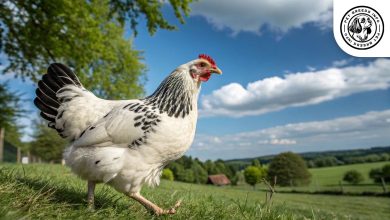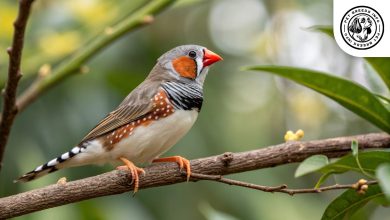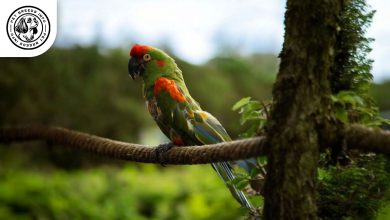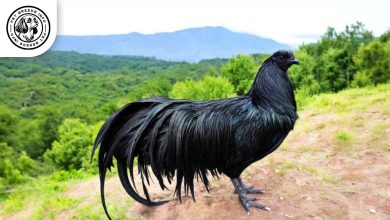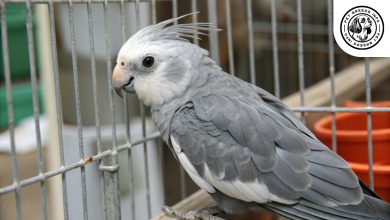Albino Cockatiel Bird: Personality, Lifespan, Food & Care
General Introduction of the Breed
The Albino Cockatiel, also known as the Lutino Whiteface Cockatiel, is a stunning and rare variety of the cockatiel (Nymphicus hollandicus). This breed does not exist in the wild but is a result of selective breeding. Cockatiels originate from Australia, where they are commonly found in open woodlands and grasslands.
The Lutino mutation first appeared in the 1950s, and the Whiteface mutation followed later. When these two mutations are combined, the result is the Albino Cockatiel, a completely white bird with striking red eyes.
Table of Contents
| Common Name | Albino Cockatiel |
| Scientific Name | Nymphicus hollandicus |
| Origin | Australia |
| Size | 30–35 cm (12–14″) |
| Lifespan | 15–25 years |
| Colors | Pure white |
| Talking Ability | Moderate |
| Noise Level | Moderate |
| Social Behavior | Affectionate, social with humans |
Physical Characteristics
The Albino Cockatiel is a medium-sized bird, measuring approximately 12-14 inches (30-35 cm) in length, including its long tail. It typically weighs between 80-100 grams.
Unlike other cockatiels, the Albino Cockatiel has a pure white plumage with no yellow coloration. It lacks the bright orange cheek patches seen in standard cockatiels due to the Whiteface mutation.
Its eyes are red due to the Lutino gene removing melanin, and it features the distinctive cockatiel crest that expresses emotions.
The beak and feet are a light pinkish or ivory color, and the tail is long and slender.
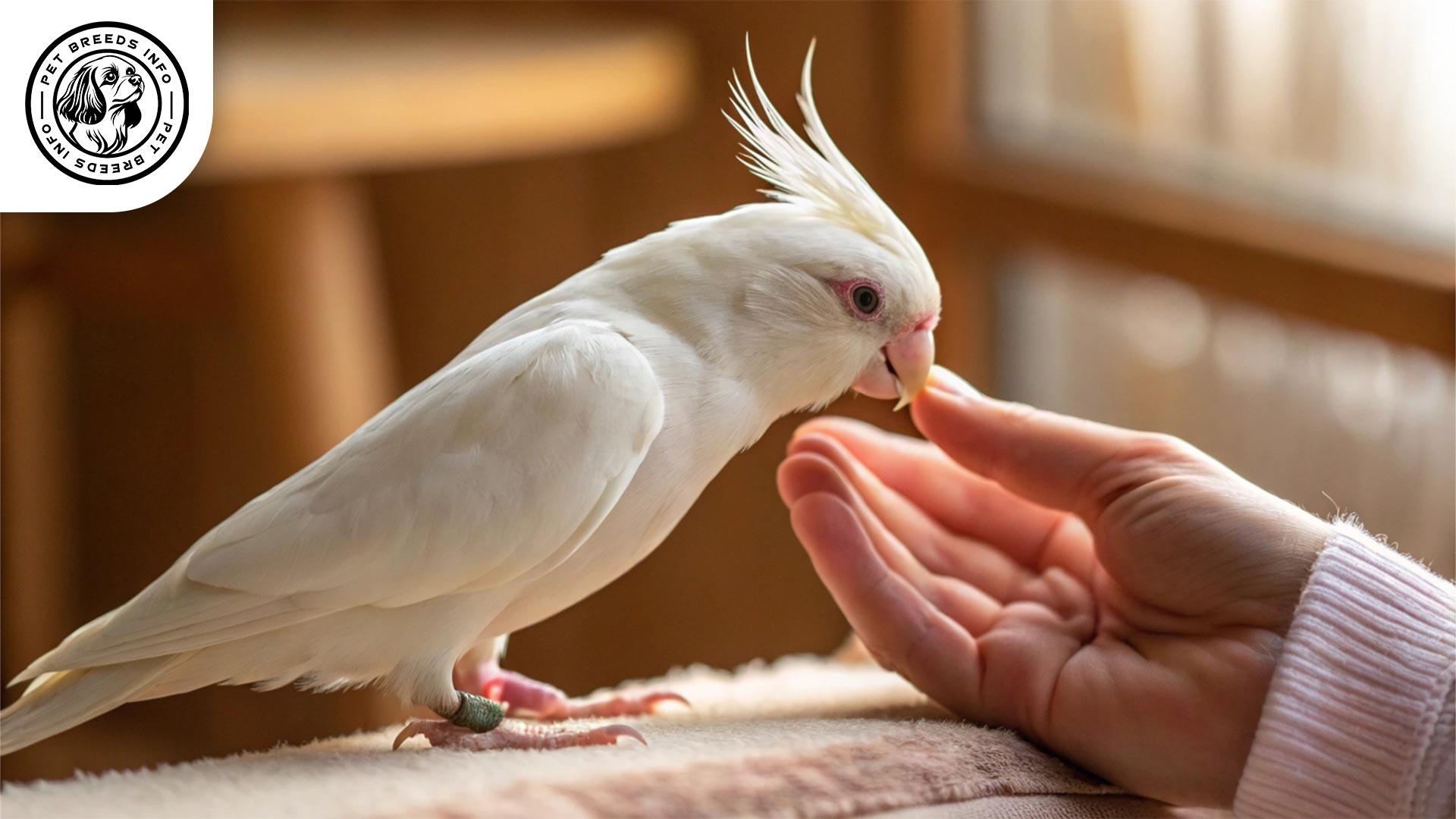
Personality and Temperament
Albino Cockatiels are intelligent, social, and affectionate birds. They enjoy interacting with their owners and can learn various sounds, whistles, and words with training.
They have a moderate energy level and require mental stimulation through toys and social interaction.
This breed becomes deeply attached to its owner and thrives on human companionship.
They are generally friendly with children and other pets but should always be introduced carefully.
Cockatiels enjoy playfulness and may engage in head-bobbing, whistling, and feather-fluffing displays.
They can be somewhat sensitive to environmental changes and may stress easily if their routine is disrupted.
Care and Maintenance Requirements
Albino Cockatiels require regular flight opportunities for exercise, either in a large cage or a bird-proofed room.
They can live comfortably in both apartments and houses, as long as they receive adequate attention and freedom to stretch their wings.
Regular grooming includes nail trimming and occasional wing clipping if desired.
Their white feathers should be kept clean by providing water baths or misting.
They are sensitive to extreme temperatures, particularly cold drafts and excessive humidity.
Read More: American Singer Canary Bird
Regular hygiene practices involve cleaning their cage, perches, and food bowls to prevent infections.
Diet and Nutrition
A balanced diet includes high-quality cockatiel seed mixes, pellets, and fresh vegetables and fruits.
Leafy greens, carrots, apples, and berries are good additions to their diet.
Toxic foods such as avocado, chocolate, caffeine, onions, and alcohol should be strictly avoided.
Avoid excessive high-fat or high-sugar foods to prevent obesity and health issues.
Fresh water should always be available and changed daily.
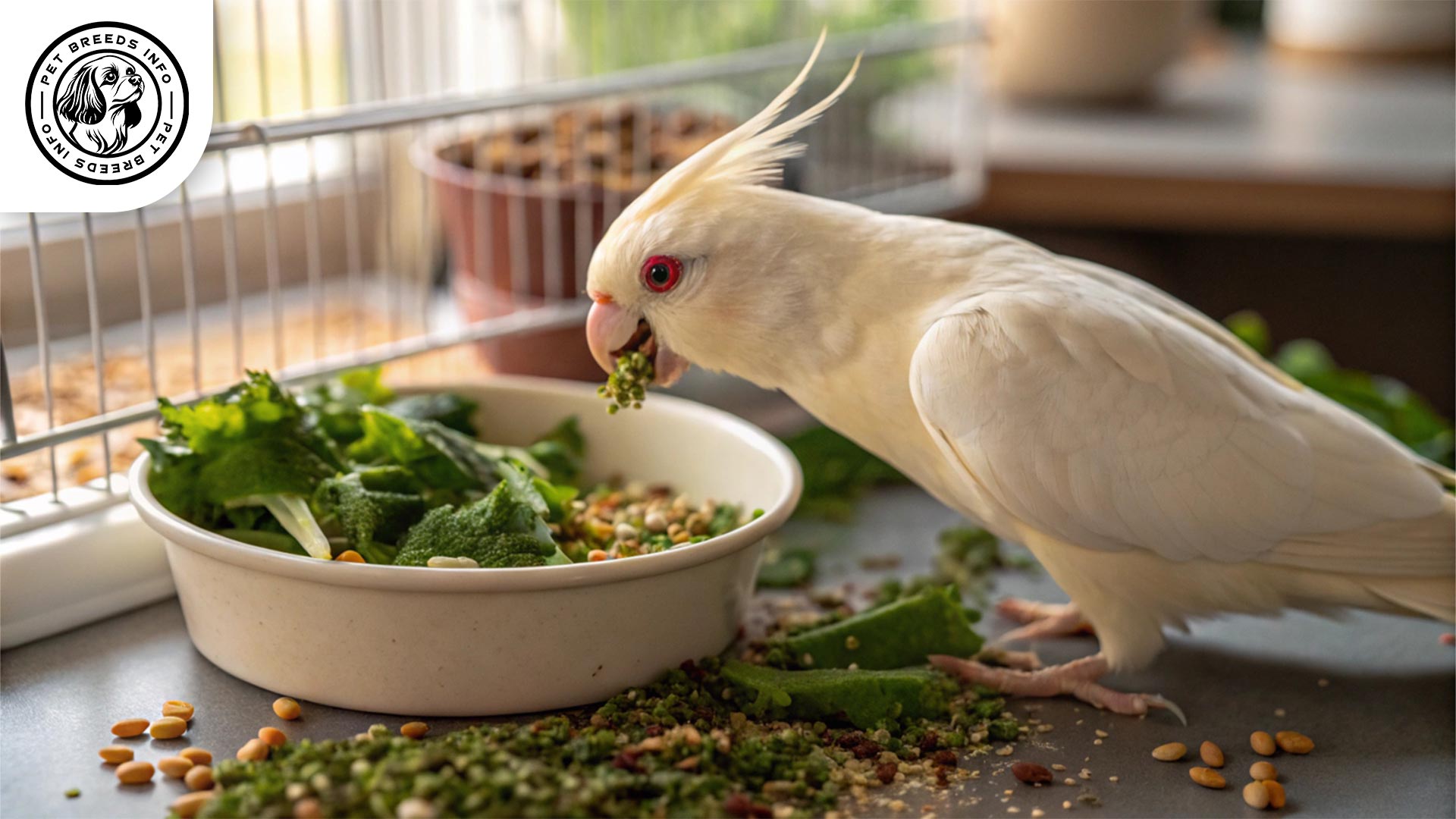
Health and Common Medical Issues
Albino Cockatiels are generally healthy but are prone to certain conditions, including respiratory infections, feather plucking, and mites.
Liver disease can be a concern if fed an improper diet high in fatty seeds.
The average lifespan ranges from 15 to 25 years with proper care.
Routine vet checkups, vaccinations, and parasite prevention help maintain their health.
Training and Behavior Management
They are relatively easy to train, responding well to positive reinforcement and treats.
Early socialization helps them become more comfortable with handling and interaction.
Read More: Ancona Chicken Bird
Whistle and word repetition can teach them to mimic sounds and simple phrases.
Consistency and gentle training methods are key to reinforcing good behavior.
Interaction with Other Animals and Humans
They are friendly birds that get along well with patient children and attentive owners.
When introduced properly, they can coexist with other birds, but interactions should be supervised.
They do best in households where they receive regular attention and companionship.
Albino Cockatiels enjoy socializing but still need some independence to explore and play.
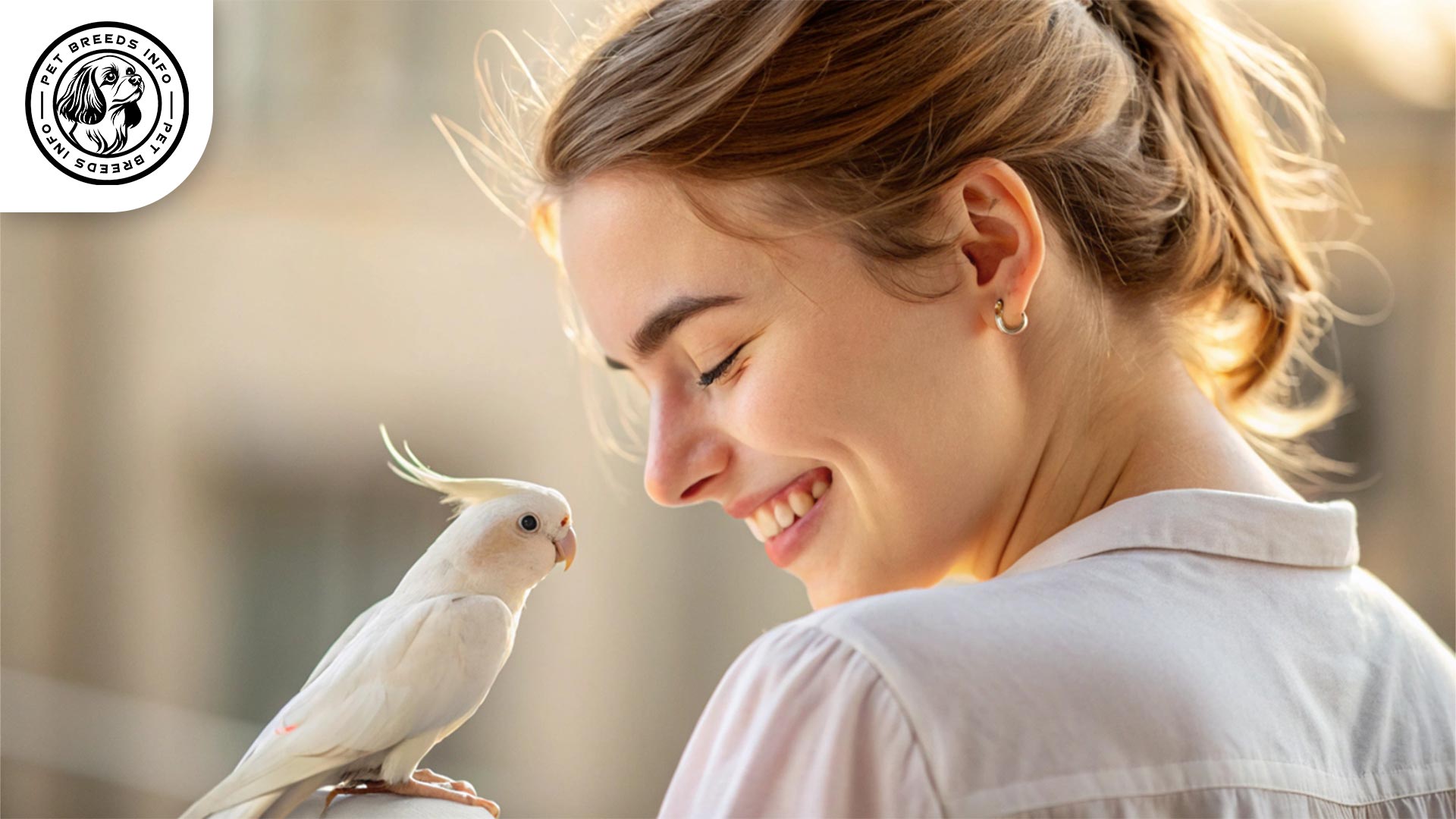
Price and Availability
The cost of an Albino Cockatiel varies, typically ranging from $150 to $300, depending on the breeder, region, and quality.
Potential owners should purchase from reputable breeders or consider adopting from bird rescue centers.
Look for signs of good health, including alert eyes, clean feathers, and an active personality when selecting a bird.
Conclusion and Final Thoughts
The Albino Cockatiel is an excellent pet for bird enthusiasts of all levels, offering charm, intelligence, and affection.
They thrive in a loving environment with regular interaction and stimulation.
Read More: Albino Budgerigar Bird
Before adopting, potential owners should consider the bird’s lifespan, care needs, and time commitment required for a happy and healthy pet.
FAQ
Can Albino Cockatiels talk?
While they don’t mimic speech like parrots, they can learn to whistle and repeat simple sounds and phrases with training.
Are they good with kids?
Yes, they’re friendly and gentle, but children should handle them calmly and under supervision.
How long do Albino Cockatiels live?
With proper care, they can live between 15 to 25 years.
Do they need a large cage?
Yes, they need space to stretch and fly—either a large cage or supervised free flight in a safe room.

